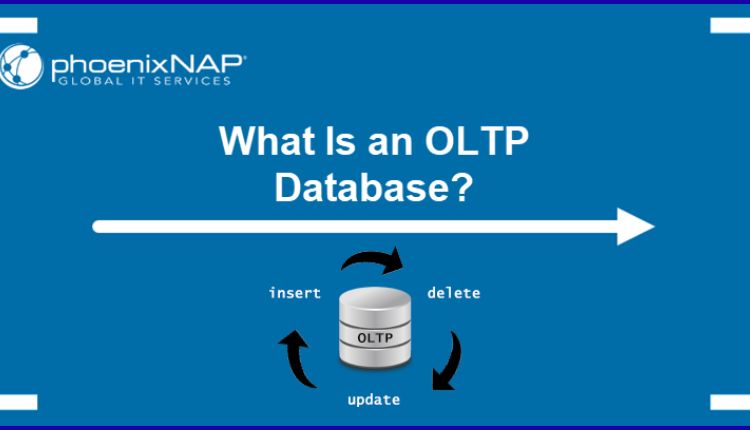Welcome to the world of transaction processing. In today’s data-centric world, it is essential to be able to accurately and effectively process business transactions. In this article, you will learn the fundamental and advanced concepts of transaction processing and the importance of Online Transaction Processing (OLTP) systems along with what exactly transactions mean within the context of the transaction processing system. We’ll consider the essential operations, the significance of atomicity, and explore the nuances of this critical field of data management.
Understanding Transaction Processing
An appreciation of transaction processing is necessary for every organization concerned with data management. By transaction processing, we mean the way information is processed in a database management system. There are many flavors of transaction processing systems, but the ultimate objective is to guarantee that data remains valid. Typically, these are a series of operations that are done that act as if they are all done together as a single unit. A transaction is a necessity for something as critical as processing financial or order-entry transactions.
What Is a Transaction?
A transaction in its essence is a single logical operation that you perform in a system. It is a series of actions that should be considered one “atomic operation.” Think about online banking: when transferring money from one account to another, you deduct from one and add to another. The execution of the two operations must succeed in order for the transaction to be valid. In the case of a failure, the transaction must be rolled back in its entirety to ensure data consistency.
Key Functions of a Transaction Processing System
A TPS is developed for processing numerous transactions while maintaining data integrity. They typically perform several essential functions:
- Capturing transaction data.
- Validating the input.
- Storing transaction records.
- Generating appropriate responses.
They must also manage transactions so that every transaction is processed consistently and efficiently. Real-time updating and querying are achievable in such systems. Point of Sale (POS) and reservation systems are classic examples of TPS, processing transactions such as payments.
Atomicity in Transaction Processing
Atomicity is one of the primary goals of ACID transactions, and it is fundamental in transaction processing. Transactions are atomic, meaning they cannot be subdivided. Either everything within the transaction runs successfully, or none of it does. That way the database will always be consistent, even in the event that something within the transaction fails. For instance, in a multi-system distributed transaction, atomicity guarantees that all systems involved commit or all roll back so that inconsistencies are avoided.
Types of Transaction Processing Systems
While discussing various types of transaction processing systems, it is important to differentiate OLTP from general Transaction Processing Systems (TPS). An OLTP system is designed to manage a large volume of online transactions at a given time. These are query-response optimized systems to process transactions with minimum response time. The wider category can include systems that also support batch processing.
We will discuss and explain transaction processing, and the role of OLTP systems, which are critical for organizations handling high transaction volumes and aiming to preserve data quality.
Distributed Transaction Processing Systems
Distributed transaction processing systems require coordination for transactions over multiple, geographically distributed DBMSs. Such intricate systems demand advanced facilities to maintain atomicity and consistency over all involved nodes. Distributed transactions are important in large-scale e-commerce applications, because in a single order, multiple services (such as payment, inventory, and shipping) across multiple servers are involved. Data integrity should always be maintained in these environments, and transaction processing should be fault-tolerant (e.g., against network failures) and should ensure that all transaction components are either fully committed or fully rolled back. Transaction management is more complex as you have more systems.
Comparison with OLAP Systems
Whilst OLTP is all about rapid throughput, processing a massive number of transactions in real time and not losing any, Online Analytical Processing (OLAP) is a completely different system. OLAP systems are used for multi-dimensional analysis of data and generating reports, enabling business intelligence and decision-making. OLAP systems are frequently historic rather than real-time. While OLTP is used to manipulate source data with rapid insert and update access and transaction management, OLAP is used to see and understand large data, and its interest remains more on the query performance of complex analytical jobs.
Comparison of OLTP and OLAP illustrates the difference between optimizing a system for situational awareness and for understanding. This data processing differentiation is what helps in customizing a database system to support specific requirements, whether managing online business transactions effectively with OLTP systems or running ad hoc queries on data for in-depth analysis with OLAP.
OLTP: Online Transaction Processing
OLTP, which stands for Online Transaction Processing, applications are characterized by their ability to handle high volumes of transactions with very low response time requirements. They are designed for online transaction processing, with high data insert and query performance requirements specifically tailored to support multiple online transactions in real time. These are systems that process business transactions, such as:
- Order entry
- Online banking
- Payment processing systems
The key features are high throughput, low latency, and mission-critical data durability. An OLTP system is crucial for applications that need to have immediate addition and access to transaction data, e.g., an e-commerce application or a booking system. To achieve this securely, businesses often rely on a trusted payment provider uk that ensures compliance, fraud protection, and seamless integration with existing systems.
Workload Management in OLTP
It is very important to manage system workloads to keep the performance of OLTP systems, particularly as the number of transactions scales up. That means good search performance, concurrent access to transactional data, efficient use of your system’s resources, etc. These OLTP applications fundamentally use methods such as pooling connections and caching results to get the response time as low as possible. Techniques like database sharding and load distribution are also essential to scale online transaction processing systems for peak workloads while ensuring data consistency. For real-time speed of processing, efficient transaction handling is critical. Optimizing transaction volumes is an ongoing process that needs to be monitored and adjusted.
Benefits of Using OLTP for Online Transactions
The use of OLTP systems for online transactional applications has several advantages in terms of better data integrity, faster response time, improved query performance, etc. OLTP guarantees that transactions are processed correctly and in a timely manner, thereby assisting in the preservation of customer satisfaction. Online Transaction Processing (OLTP) systems can process transactions in real time, maintaining an up-to-date state of the database. OLTP systems also have atomicity, in which financial transactions and other important transactions are reliably committed.
So, if you are using an online database, there are various ways in which you can increase efficiency while maintaining the quality of data.
Transactional Data and Its Importance
Transactional data is data that is generated by the transactions and interactions of a business. This record of transactions includes information like when customer orders were placed, payments made, and inventory stocked, and is critical for maintaining accurate records and influencing future decisions. Transactional data is at the core of many transaction processing systems. Transactions record the history of changes made to the system. Knowing how transaction processing works is crucial to the successful control of this precious commodity, be it processing financial transactions or entering customer orders. By performing analysis on transaction data, we can gain knowledge about customer behavior, as well as trends.
Role of Transactional Data in Processing Systems
The significance of transactional data in the transaction processing system perspective is among the most critical, affecting both business efficiency and strategic management choices. Business transactions are based on such transaction data, allowing for timely and quick order entry, payment systems, and proper accounting. Systems such as OLTP rely heavily on the integrity and availability of their transaction data, for near real-time processing and on-the-dot operations. Organizations can analyze trends, spot opportunities, and optimize their offerings by capturing every transaction. The efficient use of transactional data is essential to maintain data quality and ensure that data drives continuous improvements in all parts of the business.
Challenges in Managing Transactional Data
Handling transactional data can be challenging, especially at high volumes. Data integrity and data security must be a top priority. The matter of data quality, consistency, as well as compliance with certain regulations, must also be taken into consideration by organizations. Responsible management of transactions and transaction volume calls for streamlined transaction management, good error handling, and availability of backup and recovery. To maintain the reliability of operations, it is important to handle large amounts of transaction data in real time and to reduce response time.






